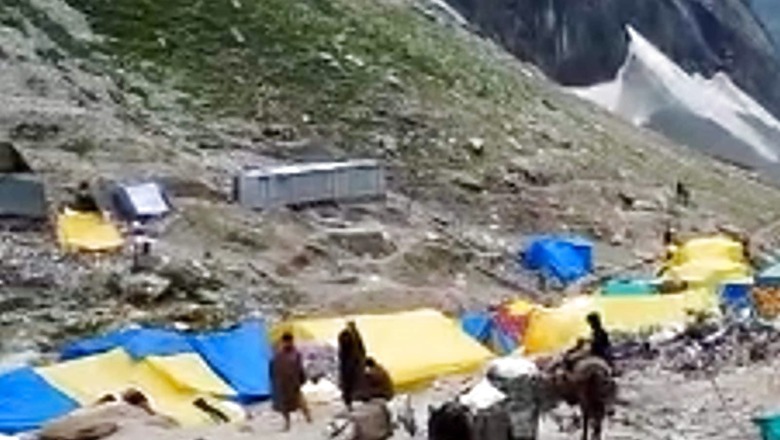
views
Srinagar: The efforts of the first responders ensured that the number of deaths in the flash floods near the holy cave shrine of Amarnath in south Kashmir Himalayas was “limited”, a senior IAF officer said on Monday. Flash floods triggered by heavy rain struck near the shrine on July 8, leaving at least 16 people dead and more than 30 missing.
The annual Amarnath Yatra, which began on June 30, resumed on Monday after remaining suspended for a day due to inclement weather. “Basically, due to the initial efforts which people put in on the first day, the fatality rate and the number of casualties were really limited,” Air Commodore Pankaj Mittal told reporters here. Asked about the scale of the rescue and relief operations, he said,”As compared to a lot of operations we have seen (earlier), this was a bit on a smaller scale”.
Air Commodore Mittal said a major part of the rescue and relief operations was over and the area should be good enough to be opened for normal activities in the next two days. “Major effort (of rescue and relief operation) has already gone through and they have already cleared the opening of the yatra again. I think in a day or two, we will be able to clear the area for anything else,” he added.
The Indian Air Force (IAF) officer said weather was the biggest challenge in the rescue and relief operations in the aftermath of the incident. “Weather was a major challenge in mounting the rescue and relief operations. The valley (leading to the cave shrine) being narrow and due to clouding, choppers were finding it difficult to enter.
“There are some minimum parameters like visibility that we need to observe before flying… even on 10th (July), we were not able to operate for more than half the day till 2 pm due to weather,” he said. The Air Commodore said, on the day of the incident, the weather was inclement and “we thought it prudent to launch the operations the next day in a coordinated manner”.
“On the 8th, the focus was on planning and coordination of assets and coordination between various agencies like the civil administration, the camp commanders, the army commanders, BSF as well as the J&K police,” he added. He said the main air operation started on July 9 around 9 am. “The assets we used were four MI-17 V5 from the base unit here and four cheetals, which augmented from the unit at Leh, two fixed wing assets which brought in manpower and assets from other parts of the country,” he added. Air Commodore Mittal said despite inclement weather, the IAF was able to carry out 112 missions. “We carried 123 evacuations and 29 tonnes material was flown in from this base to the lower cave and Panjtarni areas,” he said.
The officer said the rescue and relief efforts would not have been possible without a lot of coordination and cooperation between various agencies. He lauded the role played by the National Disaster Response Force (NDRF), Army engineers and civil administration in carrying out the rescue and relief operations.
Read all the Latest News, Breaking News, watch Top Videos and Live TV here.
















Comments
0 comment